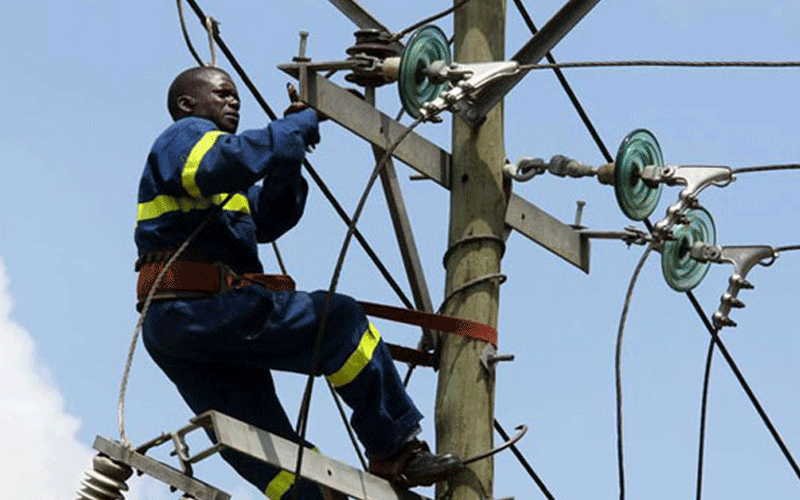Treasury audit gives grim view of parastatals

Lewis Njoka and John Otini
National Treasury has embarked on an audit and rationalisation of State corporations in a cost-cutting strategy targeting loss-making entities in line with recommendations by Bretton Wood institutions.
The audit, which has so far evaluated 18 out of the 260 corporations, is expected to help Treasury rescue an estimated Sh382 billion in the next five years that would otherwise be required to support the troubled State agencies.
Performance of big corporations such as Kenya Airways and Postal Corporation of Kenya has been dwindling for a long time, drawing a lot of funds in budgetary support.
Treasury Cabinet Secretary Ukur Yatani said unprofitable State corporations pose high fiscal risks to the government, because of the large debts they owe Treasury and the associated repayment risks, as well as unsustainable pending bills and arrears.
Out of the 18 targeted in the audit, only four were profitable with the remaining 14 being either unprofitable, loss making or operating below cost recovery.
Highly indebted
Kenya Ports Authority, Kenya Airports Authority, Kenya Pipeline and Kengen were found to be profitable and are able to pay dividends and taxes regularly. They also earn revenue and make profit for the State.
“State corporations are facing financial shortfalls or liquidity gaps – the 18 have an estimated cumulative financial shortfall of about Sh70 billion annually over the next five-year period,” said Yatani.
Kenya Power and Lighting Company and Kenya Railways Corporation are unprofitable.
The two are highly indebted with on-lent loans, hold large liabilities and have acute liquidity challenges.
State broadcaster KBC, East African Portland Cement, Postal Corporation of Kenya and Kenya Post Office Savings Bank are doing even worse and were found to be loss making.
These four have lost market share to effectively compete and have generated large tax and social security arrears ending up either insolvent or loss making.
Similarly, eight social service providers were found to be operating below the cost of recovery.
These are Kenyatta National Hospital, Kenya National Examinations Council, Athi Water Works development Agency, and Kenya Wildlife Services.
Other entities operating below cost recovery are the four largest public universities in the country including University of Nairobi, Jomo Kenyatta University of Science and Technology, Moi University and Kenyatta.
“Government transfers to State corporations are no longer proportional to the social and economic benefits gained from them, in effect limiting public resources available for investment in other critical areas of national development,” Yatani said.
Treasury said the audit has been conducted with the technical support of the International Monetary Fund experts and is part of the 38-month programme between Kenya and IMF.
It estimates that the 18 State corporations will have a liquidity gap of Sh382 billion over the next five years, approximately Sh70 billion annually.
This is assuming that their performance this financial year will be affected by the Covid-19 pandemic as it was last year and that their financial health will be fully restored over the five-year period with no extra-ordinary support or borrowing.
The figure, however, does not include any support to Kenya Airways, which was allocated Sh28 billion in the last financial year via a Supplementary Budget to meet its liquidity needs and debt obligations.
Churchill Ogutu, head of research at Genghis Capital, lauded the move to evaluate the corporations, saying too much focus was placed on the national government yet the corporations also play a critical role in society.
“The government needs to bring in some efficiency. It is not that they are entirely loss making. Some of them can be salvaged.
The State needs to offload some stake and let the private sector run off with it,” Ogutu said.
According to Yatani, unprofitable corporations pose a high fiscal risk to the government due to the high debts they owe the Treasury, associated risks and the unsustainable pending bills.
Possible reforms and restructuring the Treasury is looking into includes expenditure rationalisation, revenue enhancement measures and sealing of revenue leakages to minimise the amount of financial support required from the exchequer.
“The National Treasury, working closely with the individual corporations, will continue to gain a deeper understanding, in the coming months of the scope for increased revenue generation and cost-saving efforts at these firms, with a view to minimising or eliminating their dependence on exchequer support,” Yatani said.
Yatani said the Treasury, working closely with individual state agencies, will gain a deeper understanding, in the coming months, of the scope for increased revenue generation and cost-saving efforts with a view to minimising or eliminating their dependence on Exchequer support.
Technical expertise
Estimated liquidity gaps will serve as major inputs in this process, and closing the gaps will require one or more liquidity management choices such as reforms to boost revenues and rationalise spending, new concessional borrowing, deferred payment for on-lent loans.
Others are a debt-to-equity swap, additional transfers from the government, or a combination of the preceding measures.
Treasury will continue to address and improve the country’s fiscal vulnerabilities drawing from the technical expertise, broad experience and global best practices of the IMF and greatly values this partnership.
In the last month’s budget, the CS cut the budget deficit lightly as he splurged on infrastructure projects and a stimulus effort to boost economic growth in the face of the coronavirus crisis.
Treasury projects the economy will expand by 6.6 per cent this year. That robust growth will outpace the projected global rate and that of Sub-Saharan Africa, but it will come at a huge cost – a third of the entire budget will be plugged by deficit financing.
Growth plummeted to 0.6 per cent last year as key sectors like tourism and related services collapsed at the onset of Covid crisis.
Recovery has started this year but the pace could be curbed by lack of Covid-19 vaccines and a surge of infections in some parts of the country.








